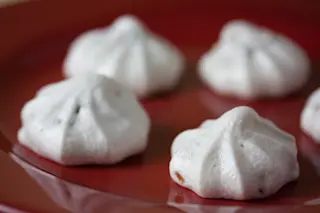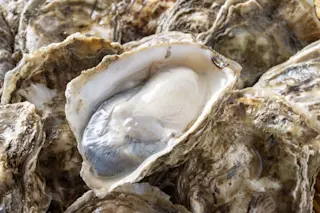Meringues are one of the few desserts that are simple yet elegant works of art. They are also precursors to other impressive, albeit considerably more complicated, desserts such as baked Alaska, lemon meringue pies, and macarons. At the bare minimum, all you need to make a fluffy meringue is egg whites, sugar, and an electric mixer—or an egg beater and some arm power. For vegans, this egg-containing dessert is not an option—but why should vegans (and those with egg allergies) miss out on this sweet, airy dollop of heaven?
To make a decent egg-free meringue, it helps to understand the meringue at the molecular level. How does a liquid get whipped into a cloud-like solid?
Egg whites, comprising 90% water, are undeniably runny. The other 10% consists of proteins, which play a major role in the fluid-to-fluff transformation. Mechanical stress from rigorously beating the egg whites causes the egg white ...














